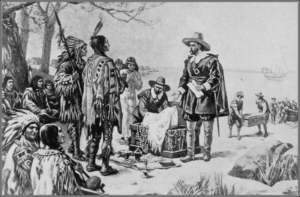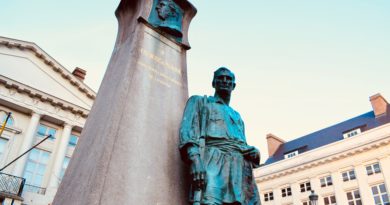Fun Fact: New York City was founded by a Belgian
Belgium’s presence throughout the passages of history is acknowledged as being involved throughout many historical events that have shaped the world. However, within these events, Belgium is often characterised as a voyeur, a side-kick to the main protagonists of the past. But did you know that one of the most important cities in the world was founded by a Belgian?
New York, New York! Yes, the big apple was founded by Belgian, Peter Minuit in 1626. Minuit (1589-1638) was from a family of immigrants that originally hailed from Tournai in southern Belgium, (previously Spanish Netherlands), but had moved to Wesel in Germany to more freely practice their Protestant beliefs.
Minuit’s time in Wesel is notably marked by the good reputation he held in the city. He took over his father’s business, married a wealthy woman named Gertrude Raedts, and was several times appointed a guardian in the city. However, by 1625, Wesel was in economic decline, and Minuit left the city to live in the more prosperous Netherlands.
It was in the Netherlands that Minuit was appointed an explorer for the Dutch West India Company, and it was from here that he set off to the Americas in search of tradable goods.
Once arriving in the Americas, Minuit was introduced to the local native tribes of the Hudson River area and began interacting with them about the purchasing of land. He is speculated to have met with the chief of the Canarsees for the purchase of the island of Manhattan, who was eager to sell the land to Peter for the price of 60 guilders – roughly $1,500 dollars in today’s standards.

The low price for the land, (even for the period), is a misfortune of history often accredited to different cultural perceptions between Europeans and Natives on how they viewed ownership of land. The concept was very unfamiliar to the natives, as they viewed land as a means to live on and not own. And being semi-nomadic, migrating between different areas for the changing seasons, this area likely would have been home to various tribes at different times of the year.
Further speculation for the chief being so willing to accept a low offer comes from the receipt of purchase of neighbouring Staten Island – which Minuit was a part of – consisting of items such as iron kettles, axe heads, hoes, wampum and drilling awls. Meaning that if the Manhattan trade included anything similar, the deal was not just a monetary one for natives but one of technological transfer that would benefit their lifestyle.
After the establishment of Manhattan, Minuit became the highest judge in the new colony and conducted politics in a measure of democracy during his administration. Several mills were built, trade grew exponentially, and the population grew to almost 300.
He was unexplainably dismissed from the Dutch West India Company In 1631 and then began working for the Swedish government in 1636, going on to help found the first Swedish colony in the new world, along the Delaware River.



